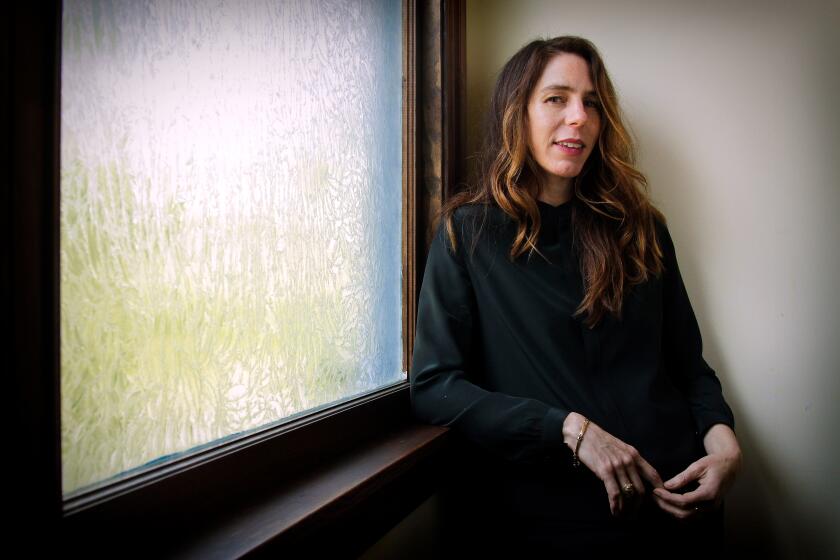The Friendship of Two Literary Titans
They were an odd couple. When Gertrude Stein met Thornton Wilder during her U.S. lecture tour in 1934, she was 60, yet a newcomer to public acclaim. Wilder, at 37, chafed at the demands of celebrity but had grown adept at handling the business aspects of authorship since the success of his Pulitzer Prize-winning 1927 novel, “The Bridge of San Luis Rey.”
Stein, for 30 years a resident of France, had influenced a generation of expatriate American writers, including Ernest Hemingway. Her own stubbornly experimental work, however, had remained unheralded until the publication in 1933 of “The Autobiography of Alice B. Toklas.”
Suddenly, Stein was a hot property. Hollywood showed interest. She and her companion, Toklas, were in Chicago--where she lectured on “What Is English Literature” and where her opera “Four Saints in Three Acts” was being performed--when she encountered Wilder. He was teaching at the University of Chicago and writing a novel, “Heaven’s My Destination,” based on his own experience of lecture tours across Depression-era America.
“Thorny” and “Grtde,” as they signed themselves during their 12-year correspondence, seem to have hit it off immediately, despite their differences in age, sexual orientation, artistic style, personality and background.
“Wilder was impressed by Stein and she liked him,” write Ulla E. Dydo, professor emeritus at City University of New York, and Edward M. Burns of William Paterson College in New Jersey, who also edited Stein’s correspondence with novelist Carl Van Vechten. “Toklas . . . understood . . . that [Wilder] offered interest and devotion without demands and might be helpful without becoming burdensome.”
Wilder lent Stein his apartment and was instrumental in getting her later works published in the United States. He visited her and Toklas at their country house in Bilignin, near Grenoble. In subtle ways, Burns and Dydo assert, Stein’s modernist ideas influenced Wilder as he made the transition from novelist to playwright (“Our Town,” 1938; “Skin of Our Teeth,” 1942).
Their artistic dialogue, however, exists mostly between the lines of a correspondence that’s not terribly exciting to read. Dydo and Burns’ annotations and William Rice’s research into the 1934 lecture tour tease out all its implications. Still, this is a book for scholars and die-hard fans of Wilder and Stein; the general reader will find it tedious going.
Wilder’s letters are chatty, mercurial, ebullient. Now and then we get a hint of the puritanical sense of duty and obligation against which Stein urged him to struggle in the interests of art.
In 1935, for example, Wilder wrote Stein that a student had asked him for $60 to get his girlfriend an abortion. Wilder instead offered the student $500 for a wedding present and tried to counsel the young woman, saying: “It’s better to have one’s life wrecked over one’s inadequacy to a First Principle than to have it wrecked over one’s assertive egocentric wish.”
In contrast, Stein’s letters, in her trademark underpunctuated style, are short, full of affection and details of weather, scenery and food, but otherwise impersonal. Her first note to Wilder after the Nazi conquest of France in 1940 reads simply:
“Well come and we will tell you everything and as we sit on the terrace we will tell you so many stories, when will you come, there is so much to tell that you can see that all we can say is that we are here, and that Bilignin was beautiful through it all, my dearest Thornton love to you.”
Wilder spent the war years as an Army Air Corps officer and was slow to write Stein after CBS correspondent Eric Sevareid found her safe in liberated France in 1944. She felt his silence keenly. After Stein’s death in 1946, Wilder wrote Toklas in apology, unable to explain his “long torpor and misanthropy” but praising Stein as “the great thinker and the great soul of our time.”
More to Read
Sign up for our Book Club newsletter
Get the latest news, events and more from the Los Angeles Times Book Club, and help us get L.A. reading and talking.
You may occasionally receive promotional content from the Los Angeles Times.








